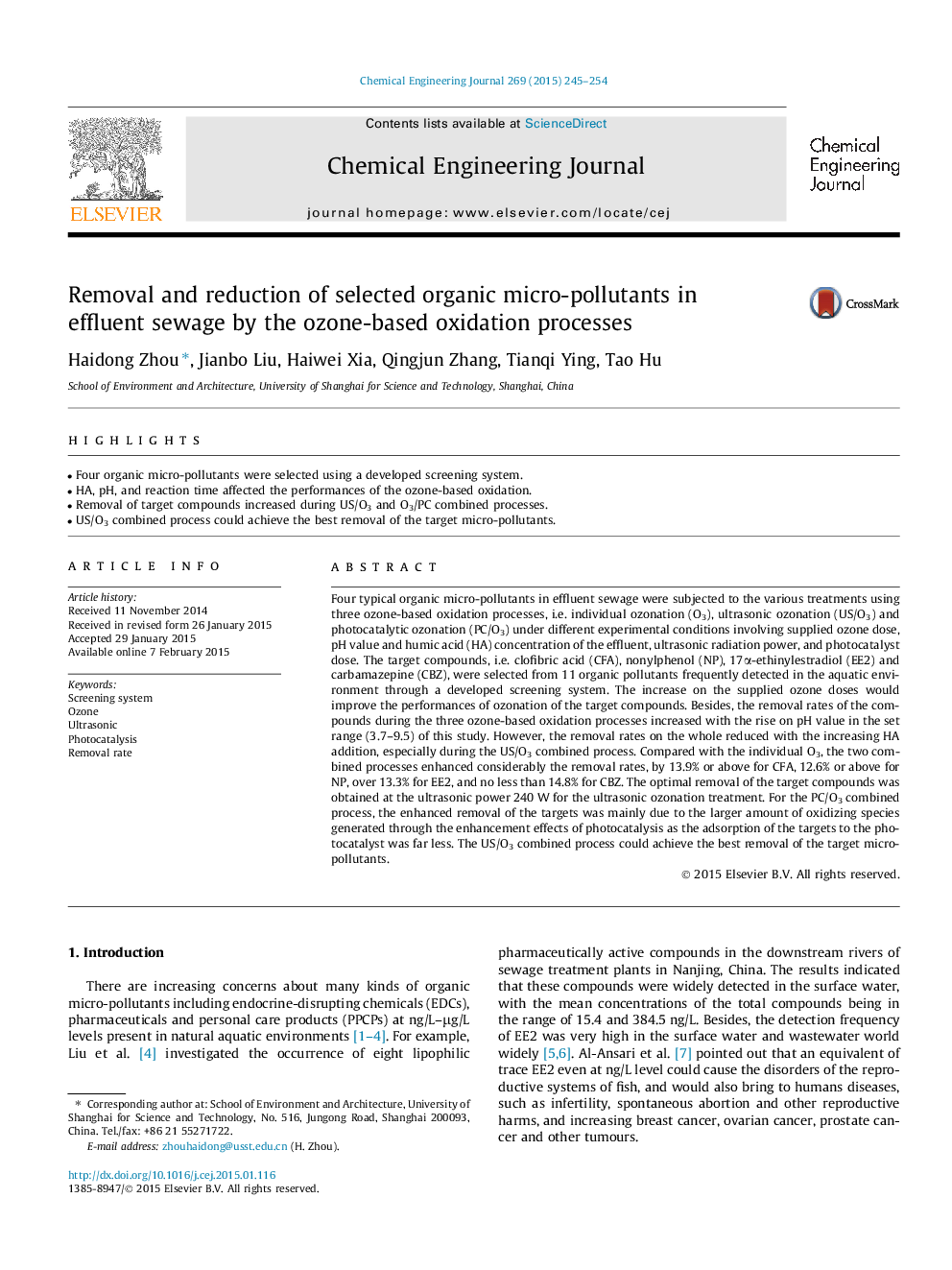| Article ID | Journal | Published Year | Pages | File Type |
|---|---|---|---|---|
| 146522 | Chemical Engineering Journal | 2015 | 10 Pages |
•Four organic micro-pollutants were selected using a developed screening system.•HA, pH, and reaction time affected the performances of the ozone-based oxidation.•Removal of target compounds increased during US/O3 and O3/PC combined processes.•US/O3 combined process could achieve the best removal of the target micro-pollutants.
Four typical organic micro-pollutants in effluent sewage were subjected to the various treatments using three ozone-based oxidation processes, i.e. individual ozonation (O3), ultrasonic ozonation (US/O3) and photocatalytic ozonation (PC/O3) under different experimental conditions involving supplied ozone dose, pH value and humic acid (HA) concentration of the effluent, ultrasonic radiation power, and photocatalyst dose. The target compounds, i.e. clofibric acid (CFA), nonylphenol (NP), 17α-ethinylestradiol (EE2) and carbamazepine (CBZ), were selected from 11 organic pollutants frequently detected in the aquatic environment through a developed screening system. The increase on the supplied ozone doses would improve the performances of ozonation of the target compounds. Besides, the removal rates of the compounds during the three ozone-based oxidation processes increased with the rise on pH value in the set range (3.7–9.5) of this study. However, the removal rates on the whole reduced with the increasing HA addition, especially during the US/O3 combined process. Compared with the individual O3, the two combined processes enhanced considerably the removal rates, by 13.9% or above for CFA, 12.6% or above for NP, over 13.3% for EE2, and no less than 14.8% for CBZ. The optimal removal of the target compounds was obtained at the ultrasonic power 240 W for the ultrasonic ozonation treatment. For the PC/O3 combined process, the enhanced removal of the targets was mainly due to the larger amount of oxidizing species generated through the enhancement effects of photocatalysis as the adsorption of the targets to the photocatalyst was far less. The US/O3 combined process could achieve the best removal of the target micro-pollutants.
